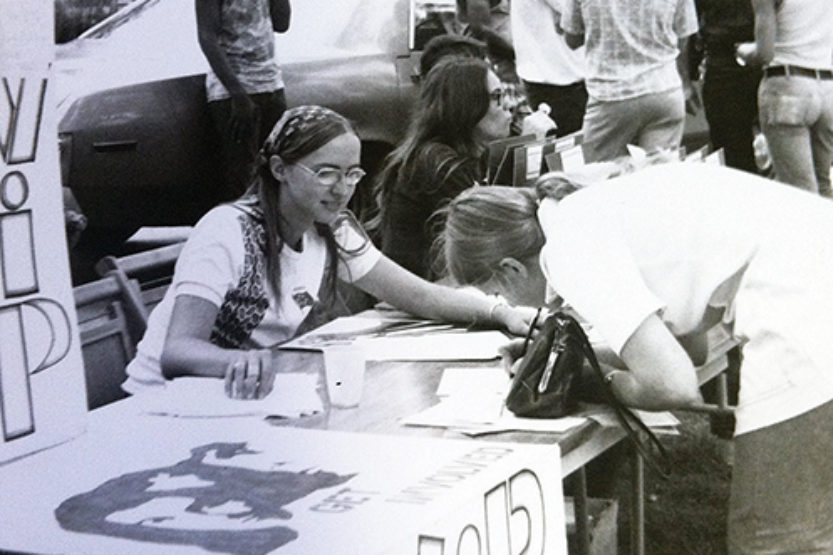VIP Treatment
 Students sign up and volunteer in the 1970s. (Photo courtesy of VIP)
Students sign up and volunteer in the 1970s. (Photo courtesy of VIP) When the late Gaylord Hatch ’57 dsswv, ma ’59 LAS, assistant dean of men at the University of Illinois, toyed with the idea of Volunteer Illini Projects in 1963, he never imagined it would achieve longevity.
But Hatch’s whimsical notion—merged with the energy and creativity of then-UI sophomore Steve Morrison ’68—created an organization that marked its 50th anniversary this year.
VIP has grown into one of the nation’s largest, most programmatically diverse student-run groups, where UI students strive to improve the surrounding community by volunteering in schools and other institutions. Every year, approximately 1,000 UI students put in tens of thousands of volunteer hours throughout east central Illinois.
And the impact on the lives they touch? Incalculable.
VIP was Hatch’s brainchild, but it never would have taken off without Morrison, the first student to respond to Hatch’s informational poster.
Together, the administrator and undergraduate decided VIP would be a wholly independent, student-run organization. When a recruiting announcement in The Daily Illini drew nearly 300 students, it was clear that VIP—whose acronym indicates the value placed on those involved—could fill the needs of both volunteer and recipient.
VIP, which began less than a year after President Kennedy’s assassination, was, at heart, social justice in action. Indeed, VIP’s early members were rebels with a cause.
“We were revolutionaries,” says Kenn Allen ’71 LAS, another driving force in the organization’s early days. “We were independent and confrontational. We demanded [and received space] in the Union. Most groups got mailboxes.”
With that space and the people who filled it came, for many, a sense of belonging.
“The University of Illinois was enormous,” says Mary Rachel Alexander ’69 LAS, MA ’76 LIS, an early leader in the VIP movement. “VIP provided camaraderie, a place with like-minded students.” It also offered purpose. “My courses were an abstraction,” she recalls, “but helping others—that felt more like reality.”
From the beginning, volunteers tutored young students, visited senior citizens, and traveled to nearby state institutions and hospitals. At the VA, they were the first volunteers allowed to take men off locked wards and onto the grounds.
It just goes to show, says Morrison of the group’s success, that “when you volunteer, and do it with a good heart, and go in with all you’ve got, you can do amazing things.”
While VIP members today may be more like ambassadors than activists, many of the same projects continue. Volunteers still tutor and visit nursing homes and schools, but they also organize campus blood drives, work with park districts and help out at museums and day-care centers.
Many student organizations pop up and disappear like snowflakes in springtime. What, then, explains VIP’s longevity? Hatch would credit the students themselves. “It proved what I believe—that if you give students all the responsibility for something, not just the fun part, they can do it,” he said.
“And they have.”

